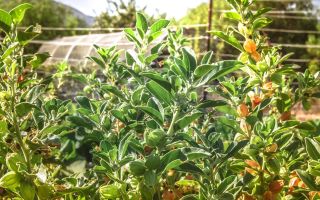Content
- 1 What it looks like and where it grows
- 2 Ashwagandha Composition
- 3 Release form
- 4 Benefits of Ashwagandha
- 5 Cooking methods
- 6 How to take ashwagandha
- 6.1 When to take ashwagandha - morning or evening
- 6.2 How to take ashwagandha for a man
- 6.3 How to take ashwagandha for women
- 6.4 How to take ashwagandha for hypothyroidism
- 6.5 How to take ashwagandha capsules
- 6.6 How to take ashwagandha tablets
- 6.7 How to take ashwagandha powder
- 6.8 With heart disease
- 6.9 With obesity
- 7 Can ashwagandha be given to children
- 8 Application in cosmetology
- 9 Contraindications
- 10 Ashwagandha side effects
- 11 Collection and procurement
- 12 Conclusion
- 13 Reviews of men about ashwagandha
The healing properties of ashwagandha have been studied for thousands of years. Due to the abundance of beneficial properties, it is widely used in Ayurveda. It is often used to treat neurological and medical conditions. However, ashwagandha is not used in official Russian medicine.
What it looks like and where it grows
Ashwagandha is an adaptogen plant belonging to the Solanaceae family. It is used by Ayurvedic healers as a rasayana. Other names for ashwagandha are poisonous gooseberry and Indian ginseng. The plant is an upright bush, which reaches a height of 1 m. It has elongated roots and fleshy leaves. The stems are covered with fluffy villi. The flowering process of a plant is accompanied by the appearance of small flowers on it, the shade of which varies from yellow to green. Ashwagandha fruits are red berries.
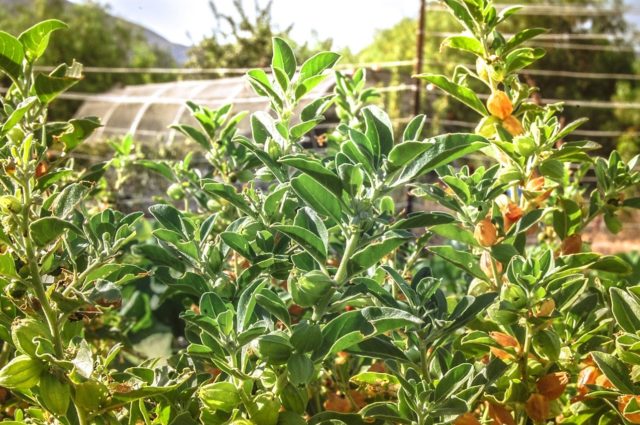
The plant prefers regions with arid climates. It can be found in India, northern Africa, and some countries in eastern Asia. On the territory of the Russian Federation, the shrub is not found.
Ashwagandha Composition
Ashwagandha has a truly unique composition. It is considered a natural immunomodulator, nootropic, adaptogen and antioxidant. In Ayurveda, it is valued for its ability to restore the body after physical and mental fatigue. Ashwagandha roots are especially beneficial. They contain over 30 active ingredients. The composition of the medicinal plant includes the following components:
- amino acids;
- lipids;
- saponins;
- phytosterols;
- macro- and microelements;
- peptides;
- phenolic compounds;
- alkaloids;
- vitamins;
- steroidal lactones;
- oligosaccharides.
The amino acids present in ashwagandha take part in metabolic processes and help build muscle mass. They are especially needed by those who are engaged in hard physical labor. The benefits of steroidal lactones are anti-inflammatory. Phytosterols help to delay the aging process of the body. Alkaloids, in turn, are designed to provide the physicochemical properties of the internal environment of the body.
Release form
In pharmaceuticals, ashwagandha is presented in the form of a dietary supplement. It comes in tablet form. The action of the dietary supplement is based on the content of ashwagandha root extract.
Benefits of Ashwagandha
Ashwagandha has a powerful restorative effect on the body. It has a cumulative effect. In some cases, it is prescribed to be taken in order to enhance the main therapy. The versatile action of the dietary supplement makes it a versatile means of combating a whole range of various diseases. The most pronounced medicinal properties of ashwagandha include:
- improved sleep quality;
- increased stress resistance;
- improving the functioning of the immune system;
- regulation of the monthly cycle in women;
- lowering blood pressure;
- increased physical endurance;
- slowing down the multiplication of malignant cells;
- stimulation of the production of sex hormones;
- prevention of cardiovascular diseases;
- sedation;
- an increase in the level of hemoglobin in the blood;
- anti-inflammatory action;
- acceleration of regenerative processes;
- prevention of atherosclerosis.
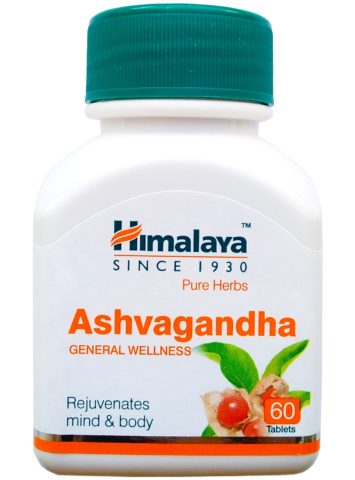
Stimulation of hormone production occurs due to the ability of the plant to affect the functioning of the thyroid gland. As a powerful adaptogen, ashwagandha increases the body's resistance to irritants. It normalizes the immune response and stabilizes the body's energy reserves. The medicinal plant is also effective against inflammatory processes in the body and pronounced pain syndrome. The substances in ashwagandha help to cope with some infectious diseases.
One of the main medicinal properties of the herbal extract is strengthening of blood vessels and regulation of blood circulation. Thanks to this process, the cells receive the necessary amount of oxygen, which has a beneficial effect on their functioning. The flow of blood allows you to cope with genitourinary diseases, increase libido and reduce the risk of developing various inflammations.
Healing properties of ashwagandha for women
Ashwagandha women are recommended to drink to normalize the menstrual cycle. The substances in its composition equalize the hormonal background, thereby eliminating gynecological diseases. The medicinal plant is effective against fibroids, mastopathy and cystic formations. It also helps to neutralize the symptoms of premenstrual syndrome. Ashwagandha is no less widespread in the treatment of infertility. In the postpartum period, it should be taken to accelerate the recovery process of the body and establish lactation.
Sometimes the herbal extract is taken to rejuvenate the body. It restores melatonin levels in cells and regulates sexual health. All this together is reflected in the appearance of a woman.
Why ashwagandha is good for men
Men recommend taking ashwagandha to stimulate potency. It stops the inflammatory process in the prostate gland and restores blood circulation in the genital area. This increases the volume and quality of the semen. On this basis, male fertility increases. The desired effect is achieved by stimulating testosterone production.
Benefits for athletes
Thanks to its tonic effect, ashwagandha is recommended for people involved in sports. It increases physical endurance and helps in gaining muscle mass. It does this by replenishing the supply of amino acids in the body. When used regularly, ashwagandha keeps energy levels at the required level. It enhances the action of anabolic hormones.
Cooking methods
Ashwagandha can be found commercially in the form of alcohol tincture, capsules for internal use and powder. The last version of the release is the crushed root of the plant. It is used to make home remedies.
Infusion
Components:
- 5 g ashwagandha powder;
- 200 ml of water.
Cooking process:
- The medicinal powder is poured with hot water and insisted for at least 1 hour.
- After a specified time, the agent is filtered and taken according to the recommended scheme.
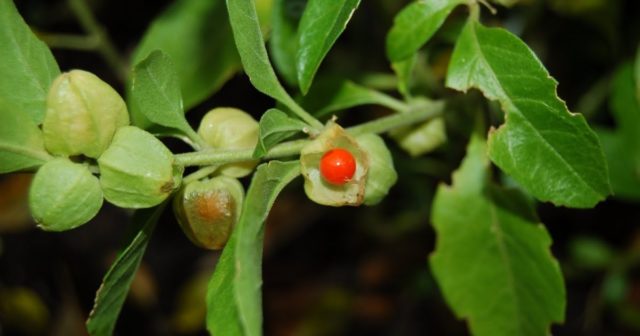
Tincture
Components:
- 25 g of plant root;
- 1 liter of alcohol or vodka.
Cooking process:
- The root is crushed to a powdery state and poured into a glass container.
- Healing raw materials are poured with alcohol and removed to a dark place for 2 weeks.
- After a specified period of time, the tincture is filtered.
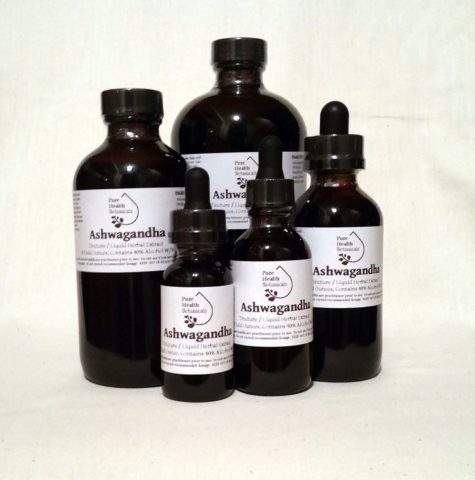
Decoction
Ingredients:
- 2 g ashwagandha root;
- 180 ml of milk.
Cooking process:
- The crushed root is poured into a saucepan and poured over with milk.
- The remedy is brought to a boil, and then kept on low heat for 15-20 minutes.
- The finished medicinal broth is filtered with gauze. It can be taken immediately afterwards.

Paste
Components:
- ghee oil;
- 5 g ashwagandha powder.
Cooking process:
- The powder is poured into a small container and diluted with khi oil.
- You should get a pasty consistency. The mixture is thoroughly stirred until a homogeneous consistency is obtained.
- The finished product must be stored in the refrigerator.
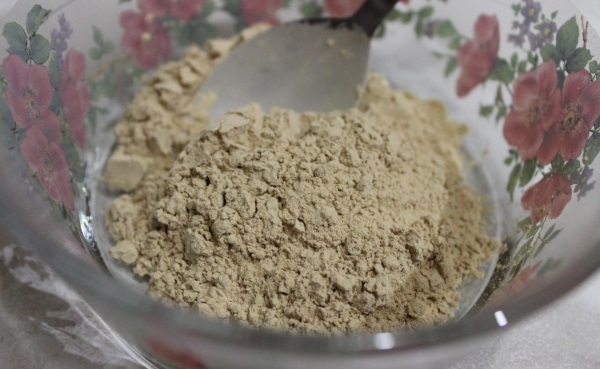
How to take ashwagandha
The method of using ashwagandha is selected taking into account the specifics of the disease.
For each drug containing a medicinal extract, a specific dosage regimen is provided. When using ashwagandha tablets, it is important to read the instructions for use. Exceeding the dosage can lead to side effects. The tablets should be taken with plenty of clean water. The powder is boiled in milk or will.
When to take ashwagandha - morning or evening
Indian ginseng is usually taken up to 3 times a day, 1 hour after meals. If a one-time admission is indicated, then it is carried out in the morning.
How to take ashwagandha for a man
For men, to decide, you need to take ashwagandha 1 tablet 2 times a day. The average duration of treatment is 2 weeks. But it can change both up and down. Such therapeutic therapy can increase libido and eliminate the inflammatory process in the prostate gland.
How to take ashwagandha for women
For women, there is a different scheme for using ashwagandha. It is necessary to take up to 500 mg of the active substance per day. The number of receptions depends on the nature of the disease. As a preventive measure, it is enough to take a remedy once a day. In severe disorders, it is increased up to 3 times a day.
How to take ashwagandha for hypothyroidism
Hypothyroidism is a condition in which the thyroid gland does not produce hormones properly. This leads to weight gain, dry skin and decreased physical activity. Indian ginseng helps eliminate the problem by regulating hormone levels in the body. For this, tablets are taken 1 piece 2 times a day. During treatment, it is advisable to control the production of hormones by passing appropriate tests.
How to take ashwagandha capsules
Most often, experts advise taking Indian ginseng in capsule form. The concentration of the active substance in 1 capsule is 300 mg.The maximum dosage of ashwagandha per day is 600 mg. Therefore, dietary supplements are recommended to be taken 1-2 times a day.
How to take ashwagandha tablets
The tablet form of the therapeutic agent contains 570 mg of the active substance. In this case, you must take 1 tablet a day in the morning. The product needs to be washed down with a little water.
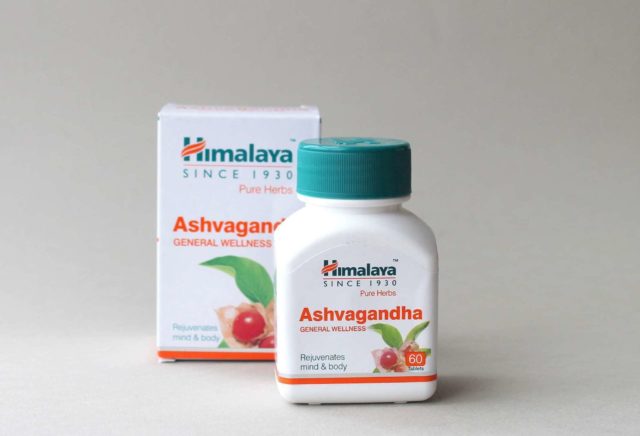
How to take ashwagandha powder
Ashwagandha powder must be taken first dissolved in milk or water. At 1 st. liquid will require 3-5 g of powder. The medicinal agent is stirred until completely dissolved. Reception is carried out 2-3 times a day for 2 weeks.
With heart disease
Among the indications for the use of ashwagandha, heart disease is distinguished. But before taking it, it is important to consult with your doctor. In this case, tablets and capsules are taken 1 piece 1-2 times a day, depending on the severity of the disease. The therapy will help stabilize the heart rate and strengthen the blood vessels. It is especially useful for the elderly.
With obesity
With excess weight, ashwagandha is usually taken in the form of a decoction. It is taken in 1 tbsp. 2 times a day. The remedy helps to start metabolic processes and reduces appetite. It also helps if the problem is caused by hormonal imbalances. At the same time, you need to revise your diet and increase physical activity. Before starting therapy, it is important to familiarize yourself with all contraindications.
Can ashwagandha be given to children
Ashwagandha is allowed to be given to children only when absolutely necessary. But it is very important to control the dosage. Under 5 years of age, it should be ¼ of the adult dosage. At the age of 5 to 10 years - ½ of her. Drinking dietary supplements is recommended with milk.
Application in cosmetology
Ashwagandha root powder is also used for cosmetic purposes. It helps to slow down the aging process and tone the skin. It is used as the main component of homemade masks. The powder is diluted with water or herbal decoction to a pasty consistency. The resulting mass is distributed over the skin and kept for 15-20 minutes. Ashwagandha healing masks help to even out complexion and eliminate under eye circles. Owners of problem skin use them to cleanse and eliminate inflammation. After the procedure, the skin pores are cleansed and narrowed. The first time after removing the mask, there may be slight redness and irritation. This is due to the activation of lymph flow.
Contraindications
To find out about the medicinal properties and contraindications of ashwagandha, it is enough to study the reviews. Statistics show that not always a remedy is beneficial. In some cases, it is recommended not to take it. Contraindications include:
- allergic reaction;
- stomach ulcer;
- overly active work of the thyroid gland;
- pregnancy;
- nervous disorders;
- breast-feeding.
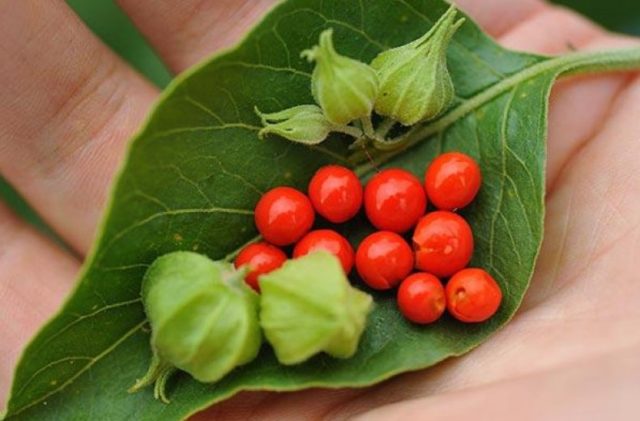
Ashwagandha side effects
If the dosage regimen is violated, the biologically active additive can provoke the appearance of side effects. It is especially dangerous to drink a remedy for a long time in large quantities. Before combining it with medications, it is advisable to consult with a specialist. In this case, the risk of developing side effects of ashwagandha increases:
- deterioration in health;
- lowering blood pressure;
- nausea and vomiting;
- inhibition of reactions;
- depressive disorders;
- stool disturbance;
- prostration.
Due to its pronounced sedative effect, the plant can cause drowsiness and reduce performance. Uncontrolled intake of dietary supplements often provokes depressive disorders.Therefore, people with unstable mental health are undesirable to take it. In some cases, the use of dietary supplements can lead to kidney failure.
Collection and procurement
It is customary to collect berries for harvesting in winter. It is during this period that the fruiting of the plant occurs. The root part, according to ancient traditions, should be harvested on the new moon. It is believed that it is then that it is filled with the maximum amount of nutrients. Leaves can be harvested regardless of the season.
It is advisable to collect medicinal raw materials in ecologically clean areas. Before drying, it is sorted, getting rid of debris and damaged fragments.
The leaves are dried in a ventilated room, protected from direct sunlight. For these purposes, you can also use a canopy. The roots can be placed directly in the sun. It is important to turn them over periodically to ensure that moisture evaporates evenly. The fact that the raw material has dried is evidenced by changes in its structure. The leaves crumble when pressed, and the roots are easy to break. It is customary to store the finished dried raw materials in a tightly closed container. It is more convenient to store the roots in a ground form.
Conclusion
It is not for nothing that the healing properties of ashwagandha are so widespread in Ayurvedic practice. The plant contains a huge amount of nutrients, significantly strengthens all life support systems. But, despite the benefits, it must be used with extreme caution for medicinal purposes.

